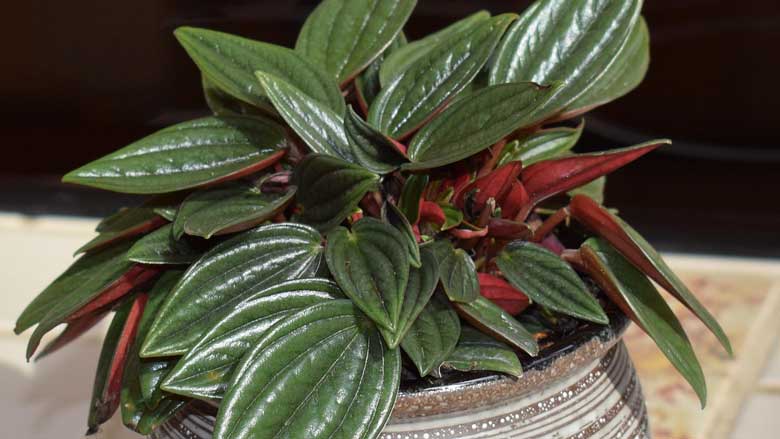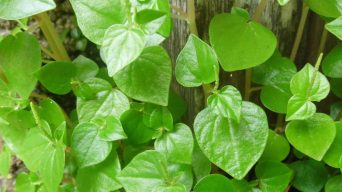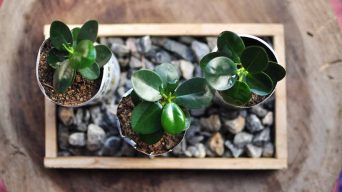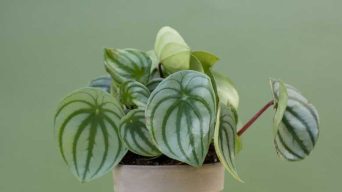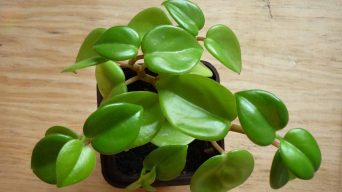Peperomia plants are one of the easiest houseplants to care for.
They are native to tropical and sub-tropical regions and are used to warm temperatures and high humidity.
Peperomia plants are also known for their drought tolerance. However, even though Peperomia plants are tolerant of drought, they still need to be watered regularly.
But how often should you water Peperomia plants?
This article will provide a complete guide on how often you should water Peperomia plants and other important information on watering these plants.
How Often Should You Water Peperomia Plants?
Peperomia plants are drought-tolerant and can store water in their thick, fleshy leaves.
As a result, they don’t need to be watered very often.
The frequency with which you water your Peperomia plant will depend on several factors, including the type of plant, the size of the pot, the time of year, and the temperature and humidity of your home.
As a general rule of thumb, you should water your Peperomia plant every one to two weeks in the spring and summer and every two to three in the fall and winter.
However, this can vary depending on the conditions in your home.
It’s essential to check the soil before watering to make sure it has dried out.
If the top two inches of soil is dry, it’s time to water your Peperomia plant.
When you water your Peperomia plant, be sure to water thoroughly until water flows from the drainage hole at the bottom of the pot.
Allow the excess water to drain away and discard it.
How Does the Type of Peperomia Affect Watering?
There are hundreds of different types of Peperomia plants, and they can vary widely in their watering needs.
Some Peperomia species, such as the Watermelon Peperomia (Peperomia argyreia), the Peperomia obtusifolia, or the Peperomia caperata, are succulent-like plants with fleshy, thick leaves that store water and can tolerate long periods of drought.
Other types of Peperomia, such as the Peperomia marmorata (Silver Heart), have thinner leaves and are more susceptible to overwatering.
You can get an idea of how often to water your Peperomia plant by looking at its type of leaves.
If the leaves are thick and fleshy, the plant is more drought-tolerant and can go longer without water.
You must water the plant more frequently if the leaves are thin.
How Often Should You Water Peperomia in Pots?
The pot size will also affect how often you water your Peperomia plant.
Plants in small pots will dry out more quickly than in large pots.
If your Peperomia is in a small pot, you should check the soil more frequently and water when the top two inches of soil are dry.
If your plant is in a larger pot, it may take longer for the soil to dry out, and you can wait an extra day or two before watering.
How Often Should You Water Peperomia in the Spring and Summer?
In the spring and summer, when temperatures are warmer, and your Peperomia is growing more vigorously, you should water your plant every one to two weeks.
It’s essential to check the soil before watering to make sure it has dried out.
If the top two inches of soil is dry, it’s time to water your Peperomia plant.
During the warmer months, your Peperomia may need more water than usual to maintain healthy growth.
How Often Should You Water Peperomia in the Fall and Winter?
Peperomia plants go into a semi-dormant state during the fall and winter, so they need to be watered less often than during the spring and summer. Also, during winter, the soil takes longer to dry out.
You should water your Peperomia plant every two to three weeks during the fall and winter.
Again, checking the soil before watering is essential to ensure it has dried out.
If the top two inches of soil is dry, you can water your Peperomia plant.
How Do You Know if Peperomia Needs Water?
The best way to tell if your Peperomia needs water is to check the soil.
Stick your finger in the soil up to the first knuckle.
If the soil feels dry, it’s time to water.
If the soil is still moist, leave the indoor plant for now.
Another way to tell if a Peperomia needs water is by looking at the leaves.
If the Peperomia leaves start to droop, that’s a sign that the plant is thirsty.
It’s essential to know when your Peperomia is under or overwatered, as this will help you adjust your watering schedule accordingly.
What Does an Overwatered Peperomia Look Like?
Overwatering is one of the most common problems when it comes to houseplants.
It’s common with Peperomias since they’re drought-tolerant plants.
You can look for several signs to determine if your Peperomia is being overwatered.
The most common signs are:
- Leaves that are yellow, brown, or wilting
- Mushy or soft leaves
- Leaves that are falling off
- Mold or mildew on the leaves or stem
- A foul odor coming from the plant
- Root rot
If you notice any of these signs, you must take action immediately.
The first thing you should do is stop watering the plant and allow the soil to dry out completely.
Once the soil is dry, you can start watering again but be sure to do so sparingly.
It’s also good to repot the plant in fresh, dry soil.
What Does an Underwatered Peperomia Look Like?
Underwatering is another common problem with houseplants, but it’s less common than overwatering.
Peperomias are drought-tolerant plants, so they can withstand periods of drought better than other plants.
There are still signs to look for that will tell you if your Peperomia is being underwatered.
The most common signs are:
- Leaves that are wilting or drooping
- Dry or brittle leaves
- Brown tips on the leaves
- Slow growth
If you notice any of these signs, you must take action immediately.
The first thing you should do is start watering the plant more frequently.
Be sure to water the plant until the soil is saturated and allow the excess water to drain away.
Check the soil every few days to see if it’s dry and water accordingly.
How Long Can a Peperomia Go Without Water?
Peperomia plants are considered to be drought-tolerant houseplants, meaning they can go for long periods without being watered.
This does not mean that you should neglect your plant, though!
Depending on the conditions in your home (i.e., humidity, light, temperature, etc.), a Peperomia may need to be watered every 1-2 weeks.
Your plant will be fine if the soil completely dries out between watering.
However, when a Peperomia goes more than 2-3 weeks without water, you may see signs of stress, such as drooping, wilting leaves, or stunted growth.
If it continues to be neglected, the plant may die, so it’s essential to keep an eye on it and water when you see the first signs of drought stress.
How Much Water Does a Peperomia Need?
When it comes to watering your Peperomia, less is more.
It’s best to water the plant until the soil is saturated and allow any excess water to drain away.
You don’t want the soil to stay wet for long periods; this can cause root rot and other issues.
That’s why it is essential to ensure the pot has proper drainage and the potting soil mix is not compacted.
To sum it up, Peperomia plants don’t need a lot of water and should only be watered when the soil is dry.
Check your plant every 1-2 weeks to see if it needs water, and water thoroughly but sparingly.
Adjust your watering schedule accordingly if you notice any signs of stress, such as wilting leaves or stunted growth.
How Do You Water a Peperomia Plant?
Peperomia plants are relatively easy to care for and are often recommended as ideal houseplants for beginners.
To water Peperomia plants, allow the top inch or two of soil to dry out between watering.
This can vary depending on the size and type of pot your plant is in and your climate. Plants will generally require less water in cooler months than in warmer months.
When watering your Peperomia plant, use room-temperature water – never cold water, which can shock the plant.
Avoid hard water, as the minerals it contains can build up in the soil and damage the plant.
If you’re unsure whether or not tap water is safe for plants, allow it to sit out overnight before using it, or use distilled or rainwater instead.
Also, avoid getting water on the Peperomia leaves, as this can cause them to rot. Instead, focus on watering the soil around the plant.
Allow the water to run through the drainage holes at the bottom of the pot, and then empty any excess water from the saucer or drip tray beneath.
Peperomia plants are relatively drought-tolerant, so it’s better to err on underwatering than overwatering.
If you’re unsure whether your plant needs water, stick your finger into the soil – if it feels dry several inches below the surface, it’s time to water.
Final Thoughts
Peperomia plants are considered low-maintenance houseplants and an excellent option for those with a limited amount of experience with gardening.
They require minimal care and attention, but it’s still important to keep an eye on the plant and water when necessary.
Generally speaking, Peperomia plants should be watered every 1-2 weeks, allowing the top inch or two of soil to dry out between waterings.
Keep an eye out for signs of overwatering, such as yellow leaves or wilting, and adjust the watering frequency accordingly.
It is also helpful to use a soil moisture meter to get an accurate reading of the moisture level in the soil.
When it comes to Peperomia plants, there are no strict rules when it comes to watering frequency.
The best way to ensure your plant’s health is by getting familiar with its needs and keeping an eye out for any signs of distress.
Following a regular watering schedule and adjusting as needed can keep your Peperomia plant healthy and thriving for many years.

